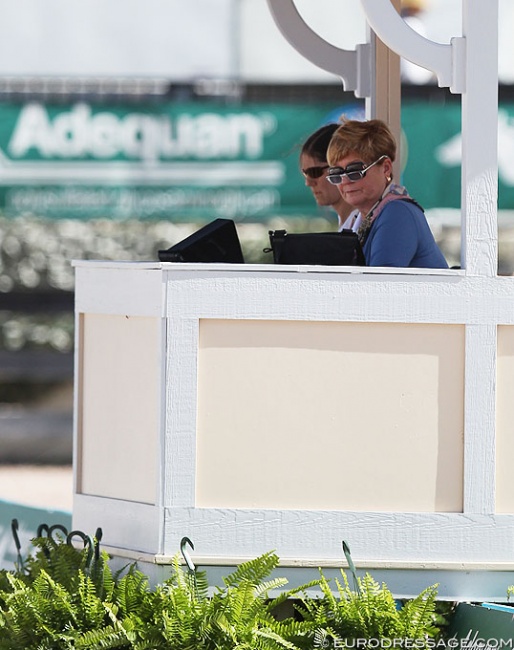
Dressage, unlike jumping, is subjective. The nice thing about ending a dressage test is that the test sheet and corresponding comments can give you a lot of insight into how you can improve your marks and your horse’s general way of going, as well as any specific movements that you need to work on. They can also tell you where you’re going right, not just where you’re going wrong!
Here’s how to understand what a Dressage test sheet is telling you… This is our guide to what a dressage test sheet is telling you, and how to make the most from every comment and score...
The test sheet can be an invaluable resource
When you get back a sheet, comments can sometimes appear confusing or even disheartening. That’s not the way they’re meant to be though, and often you just need a helping hand in deciphering exactly what the judge is trying to tell you.
Firstly, it’s important to know the scoring scale...
Movements are scored from 0-10, with 0 indicating that a movement was not performed and 10 being excellent. Here’s the thing to remember though; as part of the worldwide rules judges are only required to write a comment if you score under a 6. So if your sheet seems empty or lacking direction, it’s probably because you did a good job!
Remember that even though they have a scribe, the judge has to watch your test, score your movement, and offer any comments almost simultaneously without missing the next movement.
There’s not a lot of time for detailed descriptions or in depth comments – which explains the short and to-the-point commentary you’ll find on most test sheets. Plus, it’s important to remember that judges are there to observe and not act as trainers.
You may also see some movements that have a ‘x2’ next to them. These are called “coefficients” and are assigned to important movements and are scored double – if you get a 7 here, for instance, it counts as 14 marks towards your total. Obviously, you want to ride these movements as well as you possibly can!
And then there are the comments themselves...
Obviously there’s no limit to what could be written in the comments section, but there’s a fair few phrases and points that seems to repeat themselves across the world and across the levels. If you see these on your test sheet repeatedly, here’s what they mean:
Needs More Suppleness:
This could mean that your horse is not supple enough for the movement itself, or it could mean that you need to improve the elasticity and freedom of anxiety.
Above the bit/hollow:
You’ll get this comment when your horse lifts his head and brings the nose in front of the vertical. This is because the horse hasn’t engaged the back and is trailing the hind end. It’s often paired with the comment ‘against the hand’ which refers to the horse not accepting contact well.
Lacking rhythm/loss of rhythm:
This is a comment commonly seen in lengthened paces where a horse has been pushed too fast and become inconsistent in the rhythm. It can also often be seen after a turn or transition, or on circles or figures that are pushing the limits of a horse’s level of schooling in terms of balance and self-carriage.
Needs to be more active:
If you see this comment on your test sheets, it means that your horse lacked forwardness and impulsion. The judges don’t want to see a rushing horse, but they do want to see a horse that is happily moving forward and is ready to respond to the leg aids to increase energy from the hindquarters.
Rushing:
Especially with less experienced riders, there can be a tendency to confuse impulsion and speed. If your horse is running rather than pushing from behind, you’ll get this comment. Some riders may only see it in lengthened paces where the horse simply rushes instead of lengthening the frame and stride, others may see it repeated if the horse is hot or is being pushed too far forward.
More engaged/more uphill:
As you move up the levels, the horse is expected to show a corresponding level of collection. If your horse doesn’t show uphill tendency, self-carriage, and lift through the back and wither that is required for that level, this comment may be seen in the overall comments as well as next to individual movements.
The test sheet can be an invaluable resource for enjoying a great day or improving after a challenging event.
Words by Sophie Baker for the FEI - first published on fei.org on 28 May 2019
Photo © Astrid Appels
Related Links
Alain Francqueville: "We Need More Control of the Judging and a Downgrade System"
Dressage Judging Working Group Presents 19 Recommendations to Improve System
Further Steps Taken Towards a "Code of Points" Dressage Judging System
One Step Forward Thanks to Judging System Trials in Aachen
Readers React to "WW: Is Judging Corrupt or Just Inaccurate?"